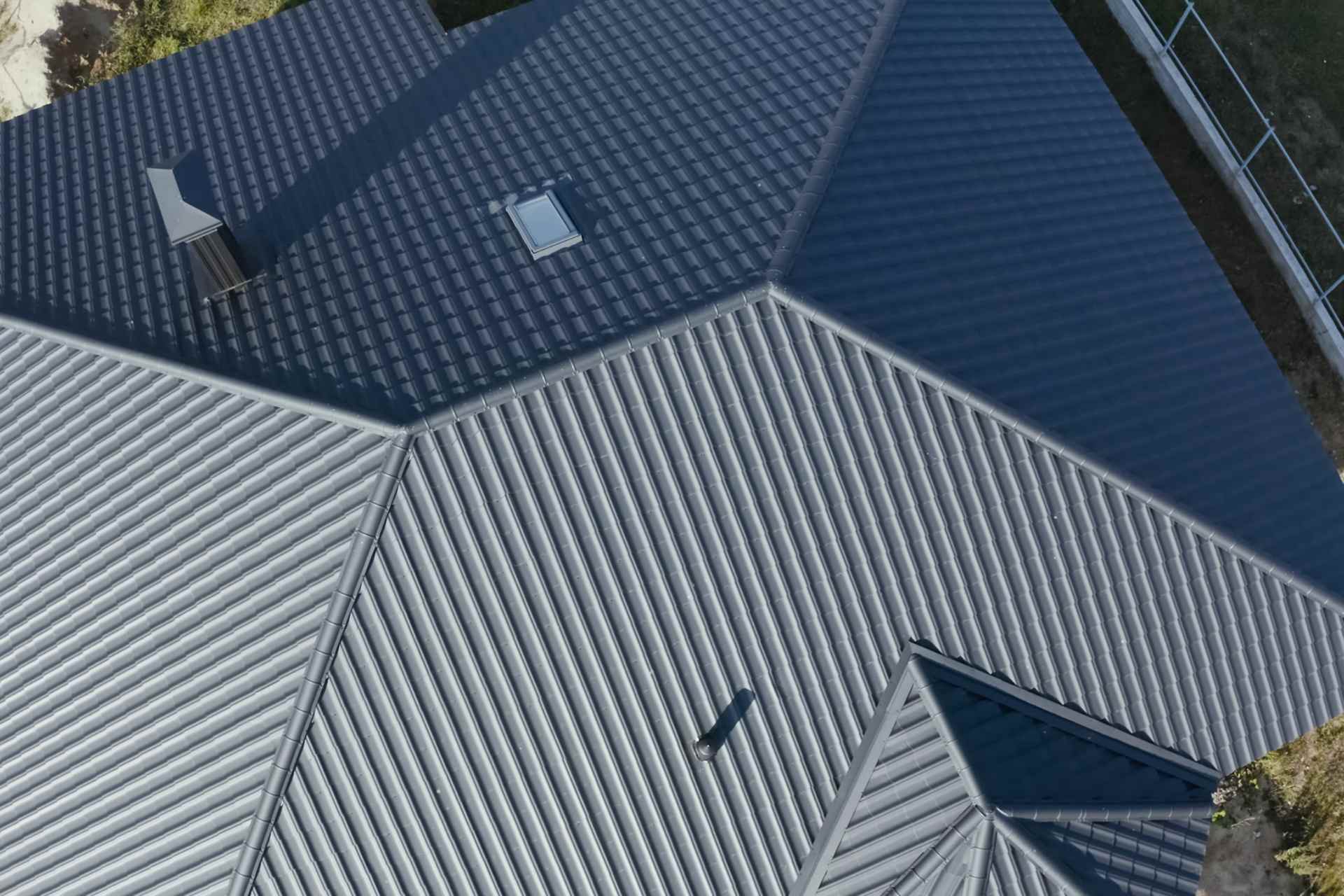5 Tips on How To Check For Roof Damage After A Storm
Following a major storm, it is critical to assess your roof for any damage. If not repaired swiftly, a damaged roof can cause leaks, structural concerns, and even more serious problems. In this post, we will go over five practical strategies for inspecting your roof after a storm. By following these instructions, homeowners may spot possible problems early on and take the necessary steps to prevent future harm.
1. Exterior Inspection
An outside assessment is one of the most efficient ways to look for roof damage after a storm. This easy but important procedure allows homeowners to physically inspect their roof and identify any evident signs of deterioration. Problems such as missing or broken shingles, damaged gutters, and twisted or loosened flashing can be detected by carefully inspecting the outside of the property. An outside check following a storm is critical since it offers an early assessment of the roof's condition. Visual signals are frequently the first signs of possible problems, and addressing them quickly can save severe damage and costly repairs down the road. Begin an external check by carefully inspecting the roof from a safe viewing point. Place yourself at a distance where you can view the whole roof surface, including the slopes and edges. If necessary, use binoculars to gain a closer look at difficult-to-reach places. Keep a look out for missing or damaged shingles throughout the examination. Strong winds and hail can displace shingles, exposing the underlying layers and making the roof vulnerable to water intrusion. Look for any cracks or areas where the shingles seem raised or curled. The condition of the gutters is another crucial component to assess during the outside examination. Storms may produce high winds and heavy rain, resulting in blocked or broken gutters. Inspect the gutters for debris collection, which can obstruct effective water drainage and cause water to back up onto the roof. Pay attention to the flashing around susceptible places such as chimneys, skylights, vents, and pipe stacks in addition to the roofing and gutters. Flashing is essential for sealing these joints and preventing water leaks. Examine the flashing for cracks, gaps, or evidence of separation, since these might allow water to enter the roof system.
2. Check for Water Stains/Leaks
Inspecting for water stains and leaks is one of the most important suggestions for assessing roof damage after a storm. Water stains and leaks are evident signs that your roof has been weakened and needs to be repaired right now. This method is extremely useful since it enables homeowners to detect concealed problems that may not be seen from an external check alone. Water stains are obvious discolorations or markings on your home's ceilings, walls, or even the interior surfaces. They are frequently caused by water seepage or leaks from the roof. You may trace the source of these stains back to the damaged location on the roof by carefully inspecting them. These stains might take the form of discoloured spots, yellowish rings, or even flaking paint. Even minor water stains should not be ignored since they might suggest a larger problem that must be handled immediately. Another key symptom of roof degradation is leaks. They might appear in your house as leaking water, wetness, or moisture patches. Strong winds, heavy rain, or hail during a storm can cause shingles to become loose, fracture, or detach, allowing water to enter your home. You can determine the particular spot on the roof where water is seeping and causing damage by looking for leaks. These leaks are commonly seen near skylights, chimneys, vents, and other roof penetrations. Inspecting your property for water stains and leaks should not be restricted to the inside. It is also critical to properly inspect the attic. The attic gives you a better and more direct view of the roof's underside, allowing you to see any leaks and water damage. Look for dampness, wet insulation, or mould development. These are evident signs that water has entered the attic space through the roof. You may prevent further damage by spotting water stains and leaks as soon as possible. Ignoring these indicators can lead to more serious issues such as mould growth, structural damage, and impaired housing integrity. Furthermore, treating water-related concerns early might help to avoid costly repairs in the long run.
3. Assess the Attic
For starters, the attic provides a unique view position for inspecting the bottom of your roof. Entering the attic and thoroughly analysing the space allows you to see symptoms of deterioration that are not evident from the outside. Look for sunshine shining through cracks or holes in the roof since this is an obvious sign of deterioration and probable leaks. Early detection of these gaps allows you to take immediate action and prevent additional water entry, which may lead to more extensive damage and costly repairs. Checking for water stains is another important component of attic inspection. Leaks are prevalent after a storm, and these leaks frequently emerge as stains on the ceilings or walls of your home. Examining the attic allows you to get a better look at the underside of the roof and spot any water stains that have formed. These stains serve as obvious proof of leaks, providing an early warning indication that you should treat the problem before it develops. Additional red flags that suggest roof deterioration include damp insulation and the appearance of mould in the attic. If there are leaks, insulation can become saturated with water, diminishing its efficiency and potentially leading to energy loss. Mould development is an obvious sign of excessive moisture, which can jeopardise the structural integrity of your roof and pose health problems. Assessing the attic helps you to detect these issues early on and take corrective action, preventing future damage to your property and providing a healthy living environment.
4. Roof’s Flashing
One of the most important things to do after a storm is to properly inspect the roof's flashing. Flashing is essential for safeguarding susceptible roof locations such as vents, chimneys, skylights, and intersections of different roofing materials. It serves as a sealant, keeping water from penetrating these weak places and creating leaks and consequent damage to the roof and inside of the house. During a storm, severe winds, heavy rain, or flying debris might impair the flashing's integrity, potentially resulting in water penetration and roof damage. As a result, evaluating the flashing is an important step in determining the overall condition of the roof. Begin by visually evaluating the locations where the flashing is put on the roof. Examine the area for any fractures, gaps, or evidence of separation. Pay special attention to the intersections where flashing joins other roofing materials, since they are prone to failure. It is critical to treat any obvious damage, such as cracked or missing flashing, as soon as possible. Water incursion through damaged flashing renders the roof prone to leaks and considerable structural damage over time. In addition to a visual inspection, run your fingertips over the flashing to look for gaps or loose portions. Assemble the flashing and ensure that it is properly fastened and tightly sealed around vents, chimneys, and other protrusions. To protect the integrity of the roof, any loose or badly sealed areas should be fixed or replaced as soon as possible.
5. Hire a Roof Professional
Roof specialists are trained and have specialised skills in assessing roof damage. Their knowledge enables them to detect both visible and hidden symptoms of damage that an inexperienced eye would overlook. They are well-versed in the complexities of various roofing materials, building procedures, and prevalent problem areas. Homeowners can acquire a more accurate estimate of the roof's condition by depending on their experience. A roof specialist has the tools and equipment needed to conduct a complete examination. They can reach difficult-to-reach regions of the roof and assess it from various perspectives. They can identify even the most minute indicators of deterioration, such as moisture penetration, insulation difficulties, or compromised structural parts, using instruments such as moisture metres, thermal imaging cameras, and drones. This degree of attention to detail guarantees that no harm is overlooked. Roof specialists perform a full inspection of the roof's general condition in addition to diagnosing problems. To estimate the degree of the damage, they analyse criteria such as the age of the roof, maintenance history, and the severity of the storm. They can detect underlying problems that may deteriorate over time and offer suitable fixes or preventative actions. Their detailed evaluation assists homeowners in making educated decisions about essential repairs or replacements.
Checking for roof damage after a storm is critical for preserving the structural integrity of your home. Homeowners may perform a comprehensive check and discover any possible concerns early on by following these five steps. Remember to inspect the outside, look for water stains and leaks, inspect the attic, evaluate the flashing, and think about contacting a professional roof inspector. Roof damage should be detected and repaired as soon as possible to protect your home, extend the life of your roof, and give peace of mind during future storms.

